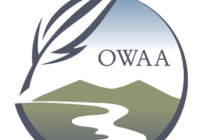Reestablishing Chinook salmon represents one of the best economic and food production opportunities in the nation
ALEXANDRIA, VA – August 10, 2009 – The American Sportfishing Association (ASA), the trade association representing the sportfishing industry, has released economic information indicating that a full recovery of California’s Central Valley Chinook salmon runs can potentially provide $5.7 billion in new economic activity for the state and the creation of 94,000 new jobs. It is estimated that the current shutdown of the salmon fishery is costing California $1.4 billion in lost economic activity and 23,000 jobs in both the commercial and recreational saltwater fishing sectors. The economic activity and jobs estimates were produced by Southwick Associates, one of the country’s leading economic research firms for outdoor activities.
In the past decade, competing demands for freshwater has lead to the dramatic decline in California salmon stocks. The California commercial and recreational saltwater fishing seasons have been closed for the last two years in efforts to protect the remaining stocks. Historically California’s Central Valley was the second largest salmon producing river system in the lower 48 states – second only to the Columbia River.
“California’s Central Valley Chinook salmon of is one of the premier fish stocks in the country,” said ASA Vice President Gordon Robertson. “Not only does it provide fishing opportunities for hundreds of thousands of anglers but wild-caught salmon are considered one of the top 10 foods in the world in terms of nutritional value.” Robertson further said, “Reestablishing the Chinook salmon represents one of the best economic and food production opportunities in the nation. The economic and job benefits for California are just part of the equation. The Central Valley stocks also have major impact on southern Oregon’s economy.”
“California’s commercial fishing industry is capable of harvesting and processing up to 25 million pounds of salmon that will help to generate this economic activity,” said Zeke Grader, executive director of the Pacific Coast Federation of Fishermen’s Associations (PCFFA) which represents the West Coast commercial fishing fleet. “Rebuilding the salmon stocks will have a profound effect on thousands of lives.”
Grader added, “California has 800 miles of coastline and ocean access. Our coastal waters are loaded with nutrients that make them highly productive in seafood. California is already the top producer of seafood in the country but salmon are the most valuable of all. With careful management and rebuilding of the wild salmon stocks we can go a long way towards feeding the nation with one of the most nutritious proteins on the market.”
Dick Pool, president of Pro-Troll Fishing Products, whose tackle manufacturing firm is headquartered in Concord, Calif., and who is also the lead advocate for Water4Fish, has been involved in California salmon management issues for 25 years. Water4Fish’s figures show that the state’s salmon infrastructure consists of over 2,000 businesses that derive a high percentage of their income from the recreational and commercial salmon industry. These businesses include 1,200 commercial boats, 11 manufacturers, seven wholesalers, 904 retailers, 230 guides and charter boats, 74 marinas and hundreds of boat dealers and marine parts and service centers.
Pool says, “Salmon water management on the freshwater side is the biggest part of the salmon recovery problem. The rebuilding task will not be easy but we are optimistic that California’s water needs for both salmon and the other sectors of the economy can be solved to the betterment of both. We need the full cooperation and support of the state and federal governments to bring this about.”
“Every upscale restaurant I know in California and around the country is begging for wild California Chinook salmon” says Paul Johnson, president, Monterey Fish Market Seafood, in San Francisco. “The demand for ocean caught salmon is very high and the economic contribution of the restaurant industry will also be very high as soon as these fish are available again. We need these fish back and California desperately needs the jobs they will create.”
Chinook salmon spawn in freshwater rivers and tributaries and then migrate to the ocean where they spend two to three years growing to 30 to 40 pounds in size. The cycle is repeated when the mature adult fish return to spawn in the exact streams where they were hatched.
###
The American Sportfishing Association (ASA) is the sportfishing industry’s trade association, committed to looking out for the interests of the entire sportfishing community. We give the industry a unified voice speaking out when emerging laws and policies could significantly affect sportfishing business or sportfishing itself. We invest in long-term ventures to ensure the industry will remain strong and prosperous as well as safeguard and promote the enduring economic and conservation values of sportfishing in America. ASA also represents the interests of America’s 60 million anglers who generate over $45 billion in retail sales with a $125 billion impact on the nation’s economy creating employment for over one million people.
Southwick Associates is one of the leading analysts in the country regarding wildlife and fisheries. We specialize in quantifying the business side of fish and wildlife helping natural resource agencies and outdoor industries to better understand the retail sales, economic impacts and other benefits that businesses and people receive from wildlife and fisheries.
—
ASA Communications
American Sportfishing Association
225 Reinekers Lane, Suite 420
Alexandria, VA 22314
(703) 519-9691 ex. 222



